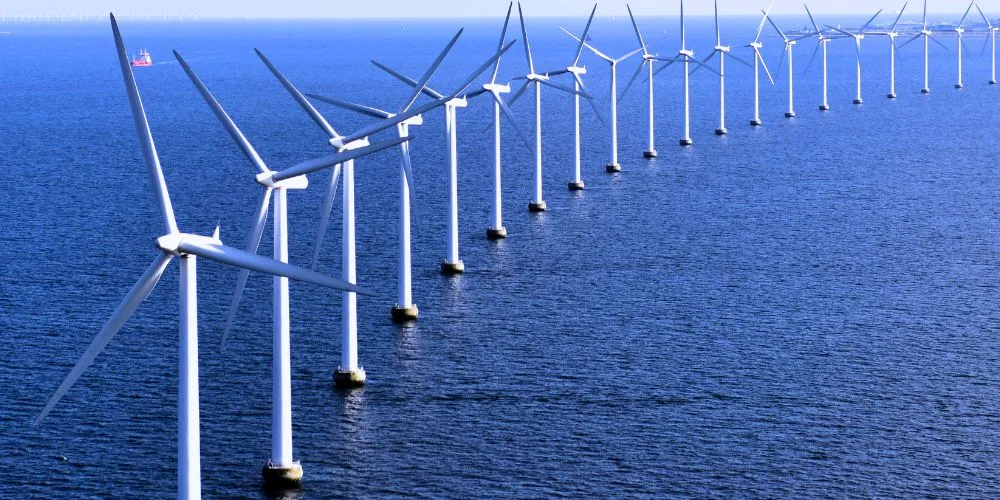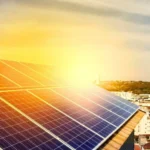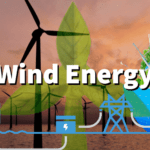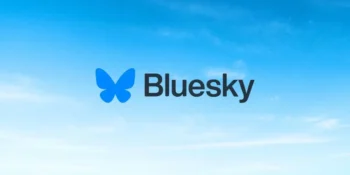In pursuing sustainable and renewable energy sources, offshore wind energy has emerged as a formidable player, harnessing the vast potential of wind resources over the open sea. This article delves into the historical evolution of offshore wind, the technology behind its operation, environmental considerations, and its role in revolutionizing the global energy landscape.
Historical Evolution of Offshore Wind
The idea of utilizing wind energy for electricity generation has roots in onshore wind farms, but the shift to offshore locations represents a strategic move to capture stronger and more consistent wind patterns. The concept of offshore wind energy began to gain traction in the late 20th century, with the first offshore wind farm coming online in Denmark in 1991.
Early Challenges and Breakthroughs
Early Offshore Wind Energy projects faced challenges related to deepwater installations, technical feasibility, and high costs. However, persistent research and development efforts and advancements in engineering and turbine technology gradually transformed offshore wind into a viable and increasingly competitive renewable energy option.
Scaling Up – Offshore Wind Farms Across the Globe
Over the past two decades, Offshore Wind Energy has experienced significant growth, with countries worldwide investing in large-scale projects. Offshore wind farms dot coastlines from Europe to Asia and the Americas, contributing to the global transition to cleaner and more sustainable energy sources.
The Technology Behind Offshore Wind
Offshore Wind Energy technology involves specialized components and engineering solutions to overcome the marine environment’s unique challenges. Understanding these technological aspects is essential for unlocking the full potential of offshore wind energy.
Wind Turbines at Sea – The Foundation of Offshore Wind Farms
Offshore Wind Energy farms consist of wind turbines installed in bodies of water, typically on the seabed. These turbines have larger blades and more powerful generators than their onshore counterparts, allowing them to capture energy from the stronger and more consistent offshore winds.
Floating Wind Turbines – Expanding Possibilities
In areas with deepwater conditions where traditional fixed foundations are impractical, floating wind turbines offer a promising solution. Floating platforms, tethered to the seabed, allow the deployment of wind turbines in deeper waters, opening up vast expanses for offshore wind development.
Subsea Cables and Grid Connection – Transmitting Power Ashore
Electricity generated by offshore wind turbines is transported to shore through subsea cables. These cables connect the offshore wind farm to onshore electricity grids, ensuring the seamless integration of offshore wind energy into existing power infrastructure.
Environmental Considerations
While Offshore Wind Energy is a cleaner alternative to fossil fuel-based energy sources, its implementation requires careful consideration of environmental impacts. Understanding these considerations is crucial for ensuring the sustainability of offshore wind projects.
Marine Ecosystem Impact – Mitigating Effects on Wildlife
Offshore wind farms can have localized impacts on marine ecosystems, affecting fish and bird populations. However, strategic project planning, such as selecting sites with minimal environmental sensitivity and implementing mitigation measures, helps minimize these effects and protect marine biodiversity.
Visual and Aesthetic Impact – Balancing Views and Clean Energy
The visual impact of offshore wind farms on coastal landscapes and seascapes is a consideration in project development. Striking a balance between harnessing clean energy and preserving scenic views involves engaging local communities and incorporating design elements that blend with the natural surroundings.
Noise and Vibration – Addressing Potential Disturbances
Offshore wind turbines can generate underwater noise and vibrations, which may impact marine life. Employing advanced technologies and conducting thorough environmental impact assessments help manage and mitigate these disturbances, ensuring the well-being of marine ecosystems.
Offshore Wind’s Role in the Energy Landscape
Offshore wind plays a pivotal role in the global transition to renewable energy, offering a reliable and scalable source of electricity. Understanding its contributions across various aspects of the energy landscape is key to recognizing its significance.
Renewable Energy Capacity – Scaling Up Clean Power
Offshore wind contributes significantly to the growth of renewable energy capacity. As technology advances and more projects come online, offshore wind farms can provide a substantial portion of the world’s electricity, decreasing reliance on fossil fuels and reducing carbon emissions.
Energy Security and Independence – Diversifying the Energy Mix
Offshore wind enhances energy security by diversifying the energy mix. Countries with access to offshore wind resources can decrease their dependence on imported fossil fuels, promoting energy independence and resilience against global energy market fluctuations.
Economic Growth and Job Creation – Fostering a Green Economy
Investing in offshore wind projects stimulates economic growth and job creation. The development, construction, and supervision of offshore wind farms generate employment opportunities, supporting local economies and contributing to the growth of a green and sustainable energy sector.
Challenges and Future Developments
While offshore wind has made significant strides, challenges remain regarding technology, cost, and public perception. Addressing these challenges and anticipating future developments is essential for maximizing the potential of offshore wind energy.
Cost Reduction – Achieving Competitiveness
Reducing the levelized cost of energy (LCOE) remains a critical challenge for offshore wind. Ongoing technological advancements, economies of scale, and streamlined project development processes are essential for achieving cost competitiveness with other forms of energy generation.
Technological Innovation – Advancing Turbine Design
Continued research and development in turbine design are crucial for enhancing the efficiency and reliability of offshore wind systems. Innovations in materials, aerodynamics, and control systems contribute to maximizing energy capture and minimizing maintenance requirements.
Community Engagement – Building Social Acceptance
Ensuring the success of offshore wind projects requires community engagement and addressing concerns related to visual impact, noise, and potential effects on local economies. Transparent communication, public education, and community involvement are essential for building social acceptance and support.
Conclusion
Offshore wind energy represents hope in the global quest for sustainable and clean energy sources. From its humble beginnings to the vast offshore wind farms that dot coastlines worldwide, the evolution of offshore wind reflects a commitment to a greener and more sustainable future. As technology advances, costs decrease, and public acceptance grows, Offshore Wind Energy stands poised to play a central role in meeting the world’s growing energy needs while mitigating the impacts of climate change.












